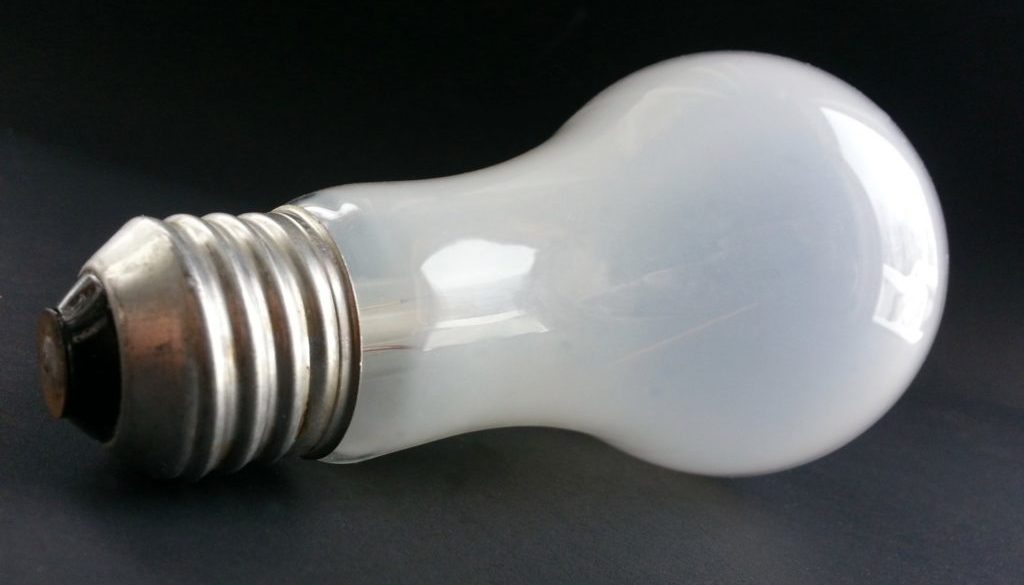America’s Utilities Unite to Support Lighting Standards
By Ralph Cavanagh, Natural Resources Defense Council
Thirty-seven electric utilities operating in 42 states and the District of Columbia, serving a combined total of almost 55 million households and businesses, have just taken an historic stand for their customers and the public interest. The utilities, which together represent more than one-third of the nation’s electricity customers, are urging the U.S. Department of Energy to abandon its proposed rollback of federal lighting efficiency standards. They also have a long track record of helping their customers replace literally billions of inefficient incandescent bulbs with advanced, highly efficient lighting products.
May 3rd was the deadline for public comments on the proposal to reverse course and roll back efficiency standards announced two years ago for the inefficient incandescent and halogen bulbs designed to go into 2.7 billion sockets—just under half of all conventional sockets in the United States. Instead of energy-wasting versions being phased out as scheduled as of Jan. 1, three-way bulbs, reflector bulbs used in recessed cans and floodlights, candle-shaped bulbs used in chandeliers and sconces, and round globe bulbs typically used in bathroom lighting fixtures would be exempt from improved federal standards for everyday bulbs.
As the joint utilities letter points out, the proposed rollback “will reduce household savings by an average of $100 every year (as of 2025),” while forcing utilities to pay more for power production and other infrastructure. Nationwide, the toll would be $12 billion annually and the wasted equivalent of 25 power plants’ worth of electricity (and pollution equal to the tailpipe emissions of 7 million cars).
In four decades of work on efficiency issues, I’ve never seen a very diverse industry come together like this, from Hawaii to Virginia (and from Utah and Idaho to Texas and Mississippi). Many of the nation’s largest investor-owned and publicly owned utilities are on the list, including American Electric Power, Berkshire Hathaway Energy, Entergy, Exelon, Southern California Edison, New York Power Authority, Los Angeles Department of Water and Power, and Seattle City Light. So are smaller systems, like those serving Chelan County, Washington; Kerrville, Texas; Lincoln, Nebraska; and Tucson, Arizona. The letter appears at the close of this blog.
The 2020 light bulb standard first surfaced in federal legislation passed in 2007 by large bipartisan majorities and signed into law by President George W. Bush.
The standard unleashed a wave of innovation that was celebrated recently by Thomas Edison’s great- grandsons in a New York Times op ed. Edison would have been both astonished and horrified at how long it took to replace his 1880s technology with vastly more efficient alternatives (a new LED light bulb cuts electricity use by more than 80 percent compared to the Edison version, and lasts more than ten times longer). The Washington Post and USA Today also have opined against the proposed rollback. An NRDC petition to DOE has secured more than 44,000 signatures. For additional background on the lighting standard, see this blog by my colleague Noah Horowitz.
The utilities’ letter also celebrates a 40-year bipartisan tradition of support for common-sense energy efficiency standards, which have been driving steady improvements in equipment efficiencies and reduced customer costs since then-President Ronald Reagan first signed them into law in 1987. There is no better illustration of America’s repeated success in linking economic and environmental progress.
UPDATE: Brad Plumer of the New York Times posted the following question on Twitter after seeing the utilities’ letter: “Here is an idle, maybe dumb question. Why do electric utilities lobby in favor of light bulb efficiency standards? Wouldn’t they have an interest in *less* efficient light bulbs that help them sell more electricity?”
That’s hardly a “dumb question,” but the letter itself has part of the answer: “We know that efficiency improvements reduce the amount of infrastructure we need to build, improve the reliability of supply, and lower customer costs.” In addition, as I’ve explained elsewhere, increasing numbers of U.S. utilities operate under regulatory systems that prevent electricity sales reductions from adversely affecting recovery of utility costs. This eliminates disincentives for helping customers save energy, which is what these standards would do.



